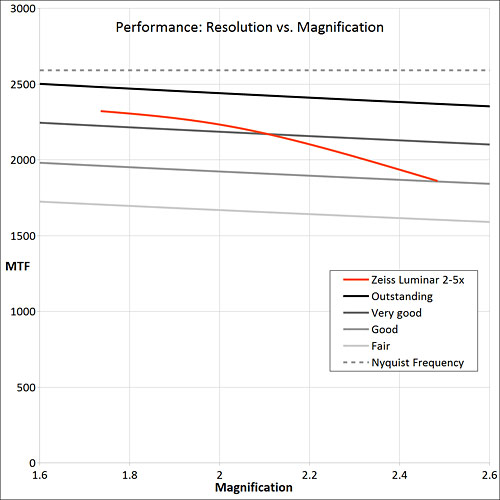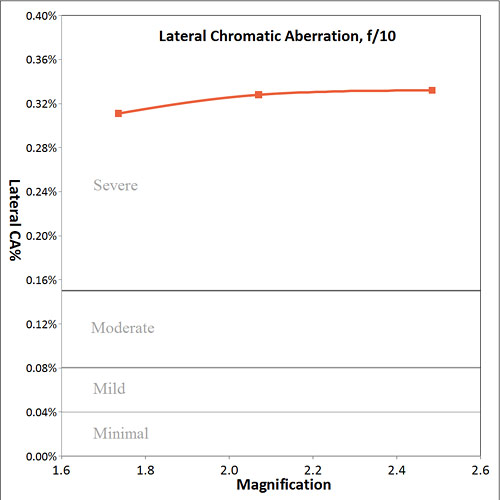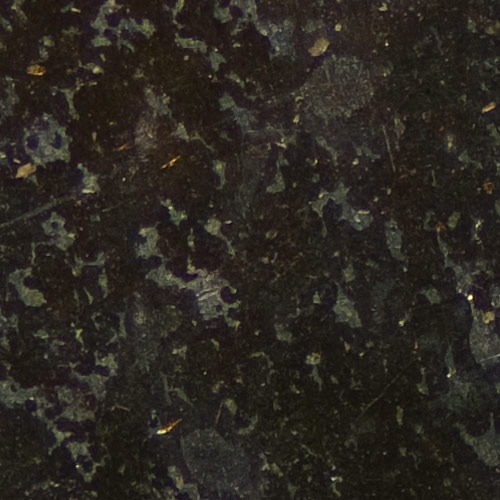|
Details
|
|
| Manufacturer: | Carl Zeiss Germany |
| Type: | Zoom Luminar |
| Description: | Zoom Luminar for Ultraphot |
| Focal Lenght: | 0 |
| Aperture: | |
| ApertureRange: | 1/2/4/8/15/30/60 |
| Magnification: | 2,5...5 |
| Opt. Magnification: | |
| Mount: | special |
| Production Year: | |
| Value: | 0 |
| Collection: | KDS |
http://www.macrolenses.de/ml_detail.php?ObjektiveNr=174
Zoom Luminar
The Zoom Luminar is optimized for magnifications between 2.5x and 5x. It was made both with a fixed Ultraphot attachment (or more precisely, a 43.5mm male Zeiss bayonet commonly used in many Zeiss microscope components), and with an unspecified screw thread. This is a very rare lens, and I cannot add much more to this discussion. I am unaware of different versions.
The Zoom Luminar is not listed in the 1974 Zeiss price list, and I believe it is older than this. Apparently, its production stopped approximately around the time Version 2 Luminars were introduced.
From the point of view of usefulness in modern photomacrography, its zoom mechanism could save some time when many pictures must be taken (especially if this lens is parfocal, which I cannot confirm). However, the zoom ratio is quite small. If time and ease-of-use are important, a Tessovar is a better choice.
http://savazzi.net/photography/luminarversions.htm
Lens: Zeiss Luminar 2-5x zoom
Vintage: 1960's-1970's?
Lens Mount: 43.5mm dovetail.
Needed Adapters: A 48 mm ring will fit on the lens mount and will snug up at the limit of the thread. My ring upsized to 58 mm. From there I had to use various step-up and step-down rings to get to a 62 mm male thread that will fit onto my 200 mm Nikon macro lens.
Preferred Mounting: This lens is made to mount onto a Zeiss Ultraphot microscope. Through diagrams and another person's research that i found on the web, this lens is made to work with a large amount of extension, at least 80 cm. Very few people (including me) have 80 cm of extension (about 30 inches) to play with. The only way that I could get usable images from this lens otherwise is to mount the lens to the front of my 200 mm Nikon macro lens. Then I also mount a 1.4x teleconverter. That gets me to a magnification of about 1.7:1 at the lowest setting with a working distance of about 30 mm. With this setup I can get to about 2.5:1 before the working distance becomes unusable.
Filter Thread: None.
Street Price: $700-$1500 in good used condition. Prices vary a lot online, shop around.
Controls: Aperture and magnification setting.
Aperture: 12 blades.
Basic Function: See "Preferred mounting" above.
| Aperture# | f/number |
| 1 | f/10 |
| 2 | f/14 |
| 4 | f/20 |
| 8 | f/28 |
| 15 | ~f/40 |
| Extension | Magnification | Working Distance |
| adapters | 1.74 | 30 mm |
| 25 mm | 2.07 | 17 mm |
| 5 cm | 2.48 | 5 mm |
| Est. Focal Length: 72 mm | ||
Appearance:




Resolution vs. Aperture:
The lowest aperture setting, "1" on the dial (about f/10) is the sharpest and most resolving aperture.

Corner Fuzziness vs. Aperture:
The corner fuzziness varies from visible at f/10(1 on the dial) to outstanding at f/28(15 on the dial)at 1.7:1.

Lateral CA vs. Aperture:
The lateral CA is severe across all aperture settings at 1.7:1.

Performance: Sharpness vs. Magnification:
I have 4 lines that represent levels of performance from outstanding (top) to fair (bottom). This shows where this lens fits into the hierarchy that I have created.
the sharpness varies from good/very good at the lowest magnification to poor at the highest.

Performance: Resolution vs. Magnification:
I have 4 lines that represent levels of performance from outstanding (top) to fair (bottom). This shows where this lens fits into the hierarchy that I have created.
The resolution varies from very good at the lowest magnification to good at the highest.

Corner Fuzziness vs. Magnification:
The corner fuzziness is in the visible range at all magnifications at f/7.

Resolving Power vs. Magnification:
This graph represents the smallest details that are able to be resolved by this lens at various magnifications. If the number doesn't get smaller as the magnification rises, there is little benefit to going up in magnification with this lens. This situation is also called empty magnification.
The resolution improvement wanes above 2:1 as does the sharpness. In this application, the lens is best left at the lowest magnification setting.

Chromatic Aberration:
This lens shows mild color fringing in the center (about 0.26 - 0.44 pixels) and severe on the periphery (around 0.320%). Anything below 0.04% is not considered significant. Above 0.08% is considered moderately visible.
There is moderate axial CA on out-of focus details (see image below) as shown by a slight green fringe on the right and a slight purple fringe on the left of the image.

Longitudinal CA:

Image Contrast: Image contrast is good, but not as good as a high-quality bellows lens.
Flare: This lens shows no significant flare during testing.
Distortion: This lens shows no significant distortion during testing.
Image Samples:
About 1.7:1 magnification, f/10, focus stack of 25 images, resized:

Pixel level crop from the center:
There is very good pixel level detail, no problems.

Pixel level crop from the corner:
There is quite a bit of fuzziness in the corners.

Conclusion:
This is an interesting lens that is very difficult to get usable images out of. To be used how it was made, you will need somewhere on the order of 80 cm of extension (see French web page). Very few people (including me) have that much extension available. It is an optically interesting lens. Since it is made to work with a very large amount of extension, you would tend to think that it has a very long focal length. I was able to measure the focal length when it was mounted to my 200 mm macro lens and then mounted the pair onto a bellows. I got a focal length of about 72 mm. That is much shorter than I would expect. I think that the discrepancy can be resolved by noting that this lens has a pupillary magnification of about 3. That will tend to push the principal planes of the lens backwards toward the detector and allow a shorter focal length lens to work at the desired magnification with a much larger than expected extension (similar to wide angle lenses on dSLR's)at the expense of some working distance. It will also improve the effective aperture quite a bit. If the lens had a standard P=1, the effective aperture would be f/30 at m=2. With this lens, P=3, it is actually f/16.7. At m=5, the difference is even more, f/26.7 vs f/60. This means that the lens will have higher resolution than f/10 would tend to imply. My focal length measurement is supported by a Zeiss brochure that shows the lens having an NA (referred to infinite focus) or about 0.05 (f/10). It has an entrance pupil of about 7 mm. These two numbers would imply a focal length of about 70 mm.
The only way I could get usable images from this lens is to mount it onto the end of my Nikon 200 mm micro lens and put a 1.4x teleconverter onto the macro lens. It is certainly not how it was made to work, but I can get images. Since I have never seen images from this lens before, I was happy to get anything. The numerical testing is with a non-standard set-up, but it's what I have.
This lens shows decent resolution and sharpness at the lowest magnification setting of about 1.7:1, but nothing special. The corner fuzziness is not great at the sharpest aperture. There is decent contrast and severe lateral CA. The long CA is moderate.
In conclusion, this is a terribly difficult lens to get usable images out of and given its relative rarity and high cost, I would stick to typical offerings for this magnification range. That would include bellows lenses and enlarging lenses in the 28-50 mm focal length range.
출처 : http://www.coinimaging.com/z2-5.html







'My equipment of the photographic > photomacrography' 카테고리의 다른 글
| Winkel Zeiss Luminars (0) | 2018.09.30 |
|---|---|
| Schneider M-Componon 28 mm f/4 (0) | 2018.09.30 |
| Olympus 20mm F3.5 Zuiko MC Macro (0) | 2018.09.30 |
| Carl Zeiss Luminar 25mm 0.14 Epiluminar Microscope lens (0) | 2018.09.29 |
| Photomacrography Bellows (0) | 2017.03.01 |